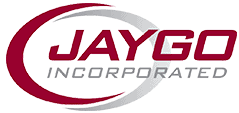Ribbon Blenders vs. Conical Blenders: Which Is Right for Your Application?
From pharmaceuticals to food and from paints to adhesives, industrial blenders are an efficient way to mix ingredients with precision. Here, we’ll look at two common types: ribbon blenders and conical screw blenders.
An Overview of Ribbon Blenders
Ribbon blenders have two narrow metal strips, or ribbons, wound in a helix around a horizontal shaft. They are suitable for use with solids, dry materials, and slurries.
How Does a Ribbon Blender Work?
In a ribbon blender, the shaft and ribbons rotate over a U-shaped trough and the inner and outer ribbons move in opposite directions to facilitate blending. This creates both lateral and radial motion to blend materials uniformly. The inner ribbon moves materials toward the ends of the trough, while the outer ribbon draws material to the center for convective material mixing.
Advantages of Ribbon Blenders
Ribbon blenders have several benefits, including:
- Efficient and uniform mixing. The inner and outer ribbons allow for consistent counterflow because they move in converse directions. This creates an even blend.
- Large batch capacity. These blenders can accommodate high-volume mixing jobs, up to thousands of liters of material in some cases.
- Cost effectiveness. Ribbon mixers have a cost-effective design that mixes efficiently. As a result they consume less energy than fluidized and high-shear bed mixers.
- Versatility for various applications. Ribbon blenders are compatible with a variety of materials including small granules, liquids, and powders.
Common Applications of Ribbon Blenders
Ribbon blenders are widely used in the chemical, pharmaceutical, and food processing industries to achieve even mixing and high product quality. Common applications include:
- Pharmaceuticals. Ribbon blenders uniformly mix products like tablet granules, capsule powders, and active pharmaceutical ingredients mixes with excipients so dosages are accurate and consistent throughout a batch.
- Food and beverage. Ribbon blenders are sanitary and efficient so they are commonly used for flour, spices, and protein powders as well as drink formulations.
- Chemical manufacturing. Ribbon blenders are used with resins, dry chemicals, catalysts, and polymers. Their rugged construction facilitates safe and efficient blending of reactive and abrasive substances.
- Cosmetics and personal care products. Powdered cleansers, facial powders, and bath salts can be mixed effectively with ribbon blenders. Optional liquid addition systems allow for incorporation of fragrances and oils, as well as adjusting moisture levels.
- Plastics and rubber. Plasticizers, fillers, and colorants are mixed into polymer bases with great consistency, promoting efficient downstream operations and product quality.
- Agricultural products. Agricultural products including herbicides, animal feed, seed treatments, and pesticides can be mixed with ribbon blenders.
An Overview of Conical Blenders
Also called cone or cone screw blenders, conical screw blenders can be used with powdered, granulated, or viscous materials. They excel at precise, gentle mixing without overheating or excess shear, and can be used to mix multiple sizes of particles with even distribution.
How Does a Conical Blender Work?
A conical screw blender is a vertically-oriented, cone-shaped vessel with a rotating helical auger, or screw, that lifts and mixes materials with superior flow control. The vessel rotates, which creates a tumbling motion for effective diffusive and convective mixing.
Advantages of Conical Blenders
Conical screw blenders have several benefits, including:
- Versatile blending. Conical blenders are ideal for heat-sensitive materials that need gentler, temperature-controlled handling. It is also suitable for delicate and dense materials. This versatility can eliminate the need for multiple blenders.
- Space-saving footprint. With their vertical design, conical screw blenders take up less space than horizontal ribbon blenders.
- Ease of maintenance. Conical blenders offer easier overall maintenance than alternative equipment because materials tend to fall to the vessel’s exit opening, rather than creating excessive build-up on the walls.
- Cost-effectiveness. Conical screw blenders are more energy-efficient than other types of blenders and require less power to run. They also reduce waste by fully discharging product.
Common Applications of Conical Blenders
Conical screw blenders are widely used with dry and powdered materials and those that require gentle blending to avoid damaging materials. Some applications include:
- Pharmaceuticals. Many pharmaceutical products, like APIs and excipients, are mixed with double cone blenders for greater uniformity.
- Food processing. Food product quality and flavor in products like additives, spices, and other dry formulations can be enhanced with conical blending.
- Chemical manufacturing. Conical screw blenders gently and safely mix catalysts, chemicals, and additives in chemical manufacturing processes.
- Cosmetics. Pigments, powders, and other ingredients are frequently mixed with conical blenders to maintain ingredient quality.
- Detergent production. Many detergents and cleaning product ingredients are mixed with double cone blenders..
- Fertilizer production. Components in fertilizers often use conical blenders to create a consistent mix.
- Plastics manufacturing. Conical blenders uniformly distribute additives for plastic materials, even when the batch incorporates materials with varying particle sizes.
Ribbon and Conical Blenders From Jaygo
Established in 1971, Jaygo Inc. is a leading supplier of a wide range of processing tools and equipment, including top-quality and highly efficient ribbon blenders, conical blenders and more. Our experienced team can assess your mixing needs to help you select the optimal equipment for your requirements.
Contact us today to learn more or to discuss your application.

